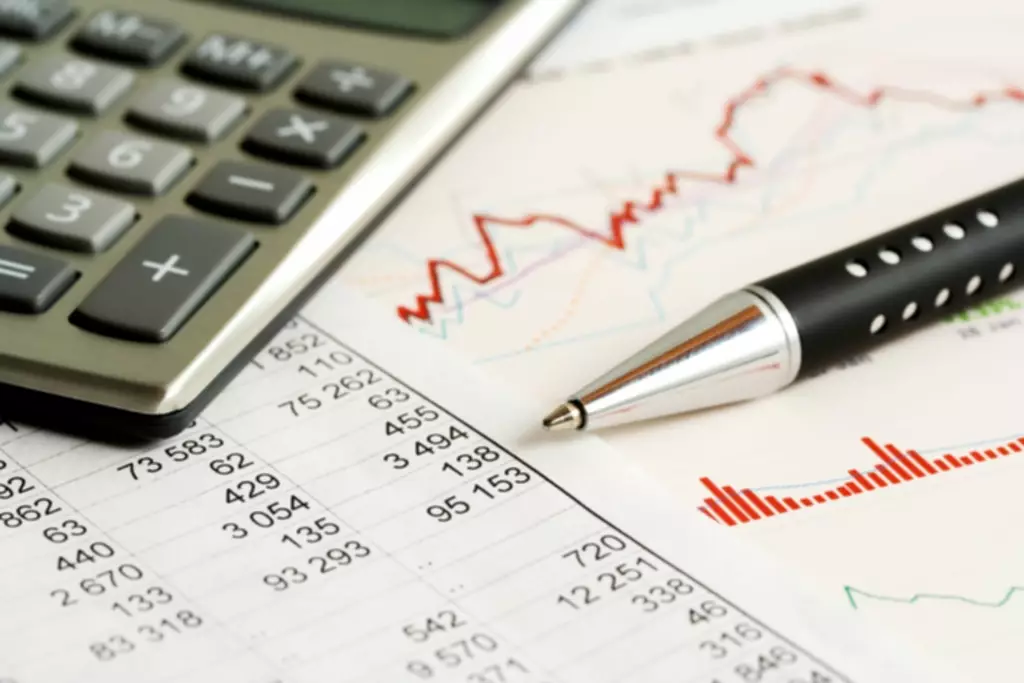

Speed is the rate of change of position of some object with respect to time. Thus the instantaneous speed is the speed of an object at a certain prompt of time. If we represent the position as a perform of time, then the velocity will depend upon the change within the place as time adjustments.
The rate of change of coordinates with respect to the other coordinates is given by the ratio of the difference between the y-coordinates to that of the x-coordinates. In other words, the rate of change is equal to the slope of the line joining these points. The instantaneous rate of change of a function is the rate of change at a certain point whereas the average rate of change of the same function is taken over a big interval. To graph the graph of average rate of change between two points, plot the two endpoints and draw a line joining them. With Rate of Change Formula, you can calculate the slope of a line especially when coordinate points are given.
Using a Graph to Determine Where a Function is Increasing, Decreasing, or Constant
The average rate of change is an average measure of change in a function over an interval. It’s the total change of the output of the function divided by the change in the function’s input. An interval is a defined range of numbers and what falls in between them. So, if I told you to find the average rate of change between the interval of 2 to 97, you could picture what’s below on a number line or graph.
The average rate of change is \(−\frac\) newton per centimeter. Using the data in Table \(\PageIndex\), find the average rate of change between 2005 and 2010. Let us have a look at a few solved examples to understand the rate of change formula better. The average rate of change of the function between given points is -2⁄7. Here’s an example problem for calculating average rate of change of a function. This gives us the average rate of change between the points and .
- An average rate of change is just when you measure how much a function changes across whatever interval you decide .
- We will also see the average percentage change in Sales Volume for all the sales volumes of the 6 months.
- Using the info in the desk under, find the typical rate of change of the worth of gasoline between 2007 and 2009.
- The slope formula is used to find the average rate of change.
- The calculation of the average rate of change is straightforward.
Whether the speed of change is positive or adverse tells us whether or not the output increases or decreases with respect to adjustments in the enter. Let’s assume a scenario where we are working with the sales volumes of the first 6 months of the year of a shop. We have the Month, Sales Volume, and Monthly Average Percentage Change in the worksheet. Now, we will calculate the monthly average percentage change in sales between 2 consecutive months and also calculate the change in sales between January and every other month. The image below shows the worksheet that we are going to work with. The average rate of change is finding the rate something changes over a period of time.
Finally, we will see the percentage change in Sales Volume between January and every other preceding month. Finally, we will see the percentage change in Sales Volume between each month and its preceding month. Upon pressing ENTER, we will now see the percentage change in Sales Volume between the month of January and February. In the early 18th century, there was controversy between the great mathematicians Isaac Newton and Gottfried Wilhelm Leibniz over who the first invent calculus.
Examples Using Average Rate of Change Formula
Even though the strong sales decreased by 9.59%, company profit increased by 68.06%. So, in this example, the average rate of change over the interval is equal to 5. To find the rate of change, first define the function that you’ll use to calculate it, along with an interval . Another situation in which we could apply the average rate of change is how much bird populations change in some forests 🌳. It’s important to note here that the average rate of change isn’t when you’re interested in every tiny fluctuation in a function but the general gist of the change. To understand the average rate of change, you first need to know what an interval is.
In simple phrases, an average price of change perform is a course of that calculates the quantity of change in a single item divided by the corresponding amount of change in another. The dictionary which means of slope is a gradient, pitch or incline. The rate of change of a variable quantity is defined as the rate at which it changes in relation to another quantity. To put it another way, the rate of change divides the amount of change in one variable by the equivalent amount of change in another variable.

The average rate of change of a function can be determined with secant lines and the instantaneous rate of change can be determined with tangent lines. As you will learn, these rates can also be determined using a special type of math called calculus. When a function has a negative slope, it means the average rate of change is decreasing. If a line were drawn between the two points used to calculate the slope, then the line would be decreasing down to the bottom right side of the graph. The average rate of change describes the average rate at which one quantity is changing with respect to another. It gives an idea of how much the function changed per unit in the given interval.
In the following image, we marked two points to help you better perceive the way to find the typical price of change. When working with features , the “common rate of change” is expressed using function notation. Using the information within the desk under, find the typical rate of change between 2005 and 2010. The following video supplies another instance of how to discover the common rate of change between two points from a desk of values. For linear functions, the average rate of change is the same thing as the slope. Generally, it defines how one quantity changes with the change in the other value.
This argument became known as Prioritätsstreit, or “priority dispute” in German. The disagreement has had lasting impact on the mathematical world, leaving us with two standard derivative notations. Lagrange notation is another common derivative notation, established by French mathematician and philosopher, Joseph-Louis Lagrange. Identify and label the two points being used to calculate the average rate.
While both are used to find the slope, the average rate of change calculates the slope of the secant line using the slope formula from algebra. The instantaneous rate of change calculates the slope of the tangent line using derivatives. A local minimum is where the function changes from decreasing to increasing and has an output value smaller than output values at neighboring input values.
How to Find the Average Rate of Change
As a member, you’ll also get unlimited access to over 88,000 lessons in math, English, science, history, and more. Plus, get practice tests, quizzes, and personalized coaching to help you succeed. If you recall, the slope of a line is found by finding the change in y divided by the change in x. Select the blank cell next to the cell with the last distance. For instance, in our sheet, select cell C7 and enter the following formula. Apply the formula and substitute the initial and final values of the interval.
Average Rate of Change Definition
The common shape of a graph can tell you common information about the rate of change of the function. If it slopes upwards to the best, then the rate of change is constructive. If it slopes downwards to the proper, then the rate of change is unfavorable.
A function is also neither increasing nor decreasing at extrema. The average rate is the total change divided by the time taken for that change to occur. The way it is calculated is similar to how the average velocity of an object is calculated. For example, the average rate of change in a population of an area can be calculated with only the times and populations at the start and end of the period. Where f and f are the values of the function f at points b and a respectively.
For every change in the independent variable the dependent variable modifications by 3 meters. The extra time you spend in your travel, the nearer you might be to your vacation spot. That means that the run, the horizontal difference between two points, will always be zero. That is sensible—a vertical line doesn’t go sideways in any respect. When we put a run of zero into the slope method, the equation becomes .
Final Average Rate of Change Quiz
The average rate of change between two points can also be equivalently understood as the gradient between the two points. Then, we will see the percentage change in Sales Volume between the consecutive months. Then, another window with the prompt “How many values are there in the data range? We will insert C5 in the input box as have the Sales Volumes for 6 months.
The cost of gasoline can be considered as a function of year. Use our free online calculator to solve challenging questions. The current through an electrical circuit increases by some amperes for every volt of increased voltage. In a mathematical sense, the quantities are replaced by ‘functions’ but the narrative remains the same.
If you recall, the slope of a line is discovered by finding the change in y divided by the change in x. The price rate of change can be used to measure not simply the course of a development but the momentum or speed of a stock value development. The price fee of change is simply the proportion change in a safety’s value between two durations. The average rate of change between two enter values is the whole change of the perform values divided by the change within the input values. The correct reply is the vertical change divided by the horizontal change between two points on a line.
It shows that changes adopted by the organization resulted in a favorable outcome. But in the second example, even though the company has removed its five employees still, its employee cost average rate of change formula has increased by 0.5%. It gives them clarity of thought that something wrong is happening in the organization. Prima facie negative values cannot be said unfavorable results every time.




